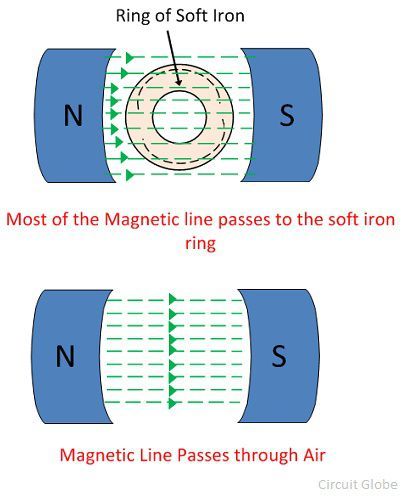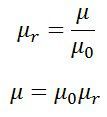Definition: The magnetic permeability is defined as the property of the material to allow the magnetic line of force to pass through it. In other words, the magnetic material can support the development of the magnetic field.
The magnetic line of force is directly proportional to the conductivity of the material. Their SI unit is Henry per meter (H/M or Hm2) or newton per ampere square (N-A2).
The magnetic permeability of the material is directly proportional to the number of lines passing through it. The permeability of the air or vacuum is represented by μ0 which is equal to 4π×17-7 H/m. The permeability of air or vacuum is very poor. μ represents the magnetic permeability.
Consider the soft iron ring is placed inside the magnetic field shown above. The most of the magnetic line of force passes through the soft iron ring because the ring provides the easy path to the magnetic lines. This shows that the magnetic permeability of the iron is much more than the air or the permeability of air is very poor.
The permeability of the material is equal to the ratio of the field intensity to the flux density of the material. It is expressed by the formula shown below.
Where, B – magnetic flux density
H – magnetic field intensity
Relative Permeability – The relative permeability of the material is the comparison of the permeability concerning the air or vacuum. The actual permeability of the air or vacuum is very poor as compared to the absolute permeability.
The relative permeability of the material is the ratio of the permeability of any medium to the permeability of air or vacuum. It is expressed as
The relative permeability of the air and the non-magnetic material is one (u0/u0 = 1).




Hi very nice info thanks
Magnets are sooo cool. Great explanation.